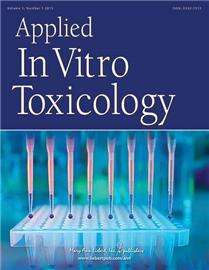Credit: Mary Ann Liebert, Inc., publishers
An esteemed panel of scientists and clinicians with expertise in developmental biology and toxicology examined the potential benefits and current limitations of using stem cell-based tissue and organ models to screen for the toxicity of chemicals and drugs in the laboratory. Their in-depth Roundtable Discussion entitled "The Future of Stem Cells and Toxicity Screening" is published in Applied In Vitro Toxicology.
Moderator Graham C. Parker, PhD, Wayne State University School of Medicine and iBio—Center for Urban Responses to Environmental (Detroit, MI) and Editor-in-Chief of Stem Cells and Development led an insightful conversation that included panelists James E. Trosko, PhD, Institute of Integrative Toxicology, College of Human Medicine, Michigan State University (Lansing); Thomas Steger-Hartmann, PhD, Bayer Pharma AG, Investigational Toxicology, (Berlin, Germany); and Bruce K. Young, MD, Silverman Professor of Obstetrics and Gynecology, New York University School of Medicine.
The development of predictive cell-based models for toxicity screening offers many potential advantages including a reduced need for animal testing. The Roundtable participants focused on the particular benefits stem cell-based approaches can offer and the accompanying challenges, including the need to standardize methods, to identify the optimal types of cells and models, and to define the desirable measures and readouts. The panelists also discussed the pros and cons of different strategies for using stem cells for toxicology screening applications.
"Human cell models for use in the evaluation of drug and chemical safety will be at the center of in vitro safety testing in the very near future," says Jim McKim, PhD, Editor-in-Chief of Applied In Vitro Toxicology and Founder and CEO, IonTox, LLC.
More information: Graham C. Parker et al, The Future of Stem Cells and Toxicity Screening, Applied In Vitro Toxicology (2017). DOI: 10.1089/aivt.2017.29009.rtl
Provided by Mary Ann Liebert, Inc






















